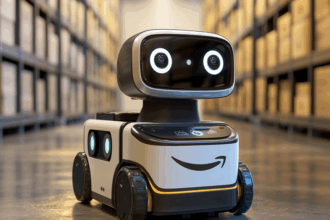In today’s fast-paced world, the role of fleet management in global supply chains is evolving rapidly. The emergence of connected vehicle technology, powered by the Internet of Things (IoT), is transforming the way businesses approach logistics and transportation. This new wave, often referred to as Fleet Management 2.0, is set to revolutionize everything from route optimization to vehicle maintenance.
Real-Time Data: The Game Changer
One of the key drivers of this transformation is the use of real-time data. Through IoT sensors, fleet managers can track vehicles, monitor driver performance, and receive detailed feedback on vehicle health. This constant stream of data enables businesses to make informed decisions quickly, improving efficiency and reducing costs. For instance, GPS data can help optimize routes, avoiding delays and reducing fuel consumption.
Moreover, real-time monitoring enhances driver safety. Sensors can alert fleet managers to dangerous driving behaviors, such as hard braking or rapid acceleration, allowing for timely interventions. As a result, businesses not only save money but also improve their environmental footprint by minimizing fuel waste.
Predictive Maintenance: Preventing Breakdowns
Another significant benefit of connected vehicles is predictive maintenance. Traditional maintenance schedules are often based on fixed intervals, regardless of the actual condition of the vehicle. However, with connected technology, vehicles can relay data on engine performance, tire wear, and other key metrics. Fleet managers can then address potential issues before they lead to costly breakdowns.
This proactive approach helps businesses reduce downtime and extend the lifespan of their fleet. In turn, companies can improve delivery timelines and enhance customer satisfaction, which is crucial in today’s competitive logistics environment.
Challenges of Connected Vehicle Integration
Despite the obvious advantages, the widespread adoption of connected vehicles is not without its challenges. One major hurdle is the cost of integration. Retrofitting existing fleets with IoT-enabled devices or purchasing new connected vehicles can be expensive, especially for small to mid-sized businesses. While the long-term benefits often outweigh these upfront costs, it can be a barrier for companies with tight budgets.
Additionally, managing the vast amounts of data generated by connected vehicles requires advanced systems and skilled personnel. For many organizations, this means investing in new software and training employees to interpret the data effectively.
Cybersecurity Concerns
Another concern is cybersecurity. As fleets become more interconnected, they also become more vulnerable to cyberattacks. A breach could compromise not only the vehicle’s systems but also sensitive business data. As such, ensuring robust cybersecurity measures is critical to the success of connected fleets. Companies need to implement strong encryption, regular software updates, and comprehensive security protocols to protect against potential threats.
The Future of Autonomous Fleets
Looking ahead, the future of connected vehicles in supply chains is intertwined with the development of autonomous fleets. With advancements in artificial intelligence and machine learning, it is becoming increasingly feasible to have self-driving trucks manage deliveries. These autonomous vehicles could eliminate human error, reduce costs, and further optimize route planning.
Furthermore, autonomous fleets would enable businesses to operate around the clock, improving delivery speeds and reducing transportation costs. While regulatory and technological challenges remain, the potential for fully autonomous fleets in logistics is undeniable.
Conclusion
Fleet Management 2.0 represents a significant leap forward in the logistics industry. Connected vehicles are improving operational efficiency, enhancing safety, and reducing costs. However, businesses must overcome integration challenges, manage large amounts of data, and address cybersecurity concerns. As the technology continues to evolve, autonomous fleets will likely become a reality, further reshaping the future of global supply chains. The connected vehicle revolution is here—and it’s driving the future of logistics.







